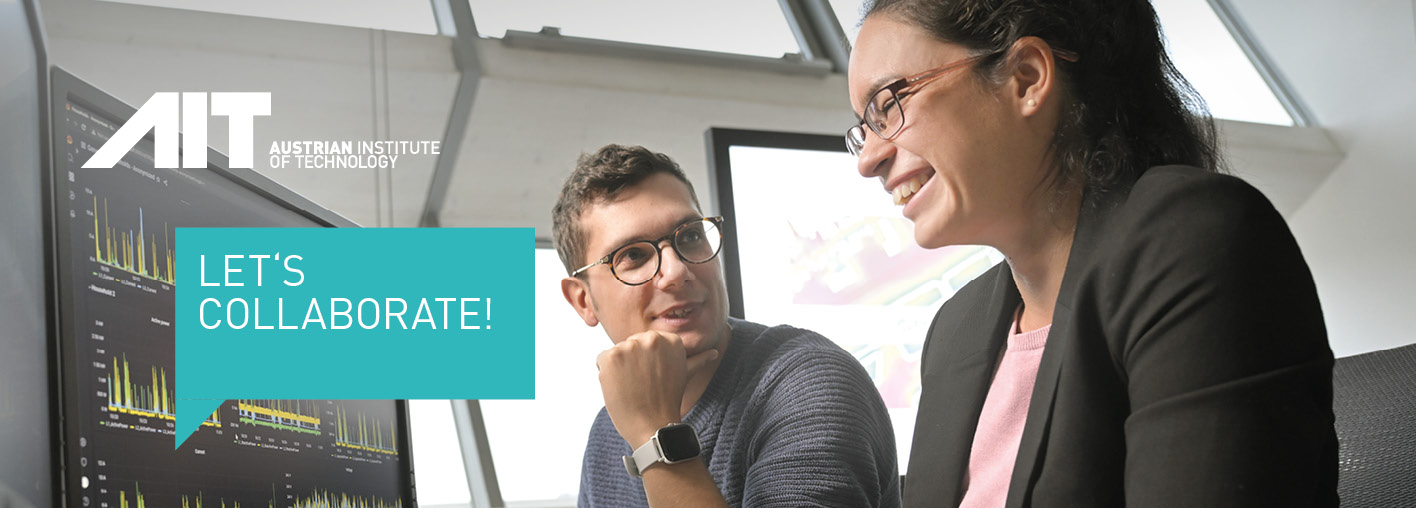
As Austria's largest research and technology organisation for applied research, we are dedicated to make substantial contributions to solving the major challenges of our time, climate change and digitisation. To achieve our goals, we rely on our specific research, development and technology competencies, which are the basis of our commitment to excellence in all areas. With our open culture of innovation and our motivated, international teams, we are working to position AIT as Austria's leading research institution at the highest international level and to make a positive contribution to the economy and society.
Our Center for Vision, Automation & Control invites applications for a master’s thesis position in Vienna. At Center for Vision, Automation & Control (VAC), the automation of work machines, such as cranes and forklift trucks, is a strategic research goal. In the future, these machines will take over repetitive and dangerous tasks. To enable automation, many complex issues need to be investigated, ranging from environment recognition and interpretation to machine control and human-machine interaction. For validation and testing purposes, the AIT has set up its own open-air test site for autonomous machines in Seibersdorf, where also our Complex Dynamical System team conducts research activities.
Throughout our projects, we deal a lot with the topic of motion planning. Motion planning in the 2D plane is a long-studied problem in robotics resulting in a broad spectrum of feasible methods and algorithms. However, performance relies heavily on the problem itself, the robot, the environment, and the tuning of the algorithms. This makes an objective quantification and comparison beforehand difficult. Potential motion planning algorithms include sampling-based planners, like RRT with all its variants, geometric algorithms like spline approaches, and optimisation-based planners. Motion planning is especially challenging for environments with multiple paths and narrow passages and for systems, where changes of driving directions are necessary.
Master Thesis “Benchmarking Motion Planning for a Forklift in Real-World Application”
CENTER FOR VISION, AUTOMATION & CONTROL
- In this master thesis, you will investigate, integrate and benchmark multiple motion planning algorithms for an articulated vehicle in narrow environments. The goal is to scientifically quantify at least three different motion planning algorithms in various benchmarking scenarios.
- Further, you will evaluate the practical feasibility on a real-world forklift in AITs Large-scale Robotics Lab.
- You will broaden your knowledge and skills in the field of motion planning, ROS integration, and automation & control theory.
- You will train in scientific work and have the opportunity to discuss your experiences with scientific interdisciplinary experts from the field of automation & control and robotics.
- You may publish your results in a journal or present them at conferences.
Your qualifications as an Ingenious Partner:
- Ongoing master's studies in the field of Automation & Robotic Systems, Manufacturing and Robotics / Robotics, Mechatronics, AI, or a comparable technical field.
- Good knowledge in Automation & Control, Motion Planning
- Programming experience in Python and/or C++
- ROS-knowhow is advantageous
- Willingness to work at both our locations in Vienna (main location) and in Seibersdorf (2 times / month)
- Good knowledge of English or German in word and writing
What to expect:
- Duration of the master’s thesis project: 6 months
- Start-date: ideally asap – There is some flexibility concerning the start-date
- EUR 601,-- gross per month for 12 hours/week based on the collective agreement. There will be additional company benefits. As a research institution, we are familiar with the supervision and execution of master theses, and we are looking forward to supporting you accordingly!
At AIT diversity and inclusion are of great importance. This is why we strive to inspire women to join our teams in the field of technology. We welcome applications from women, who will be given preference in case of equal qualifications after considering all relevant facts and circumstances of all applications.
Please submit your application documents including your CV, cover letter, relevant certificates (transcript of records) online.
